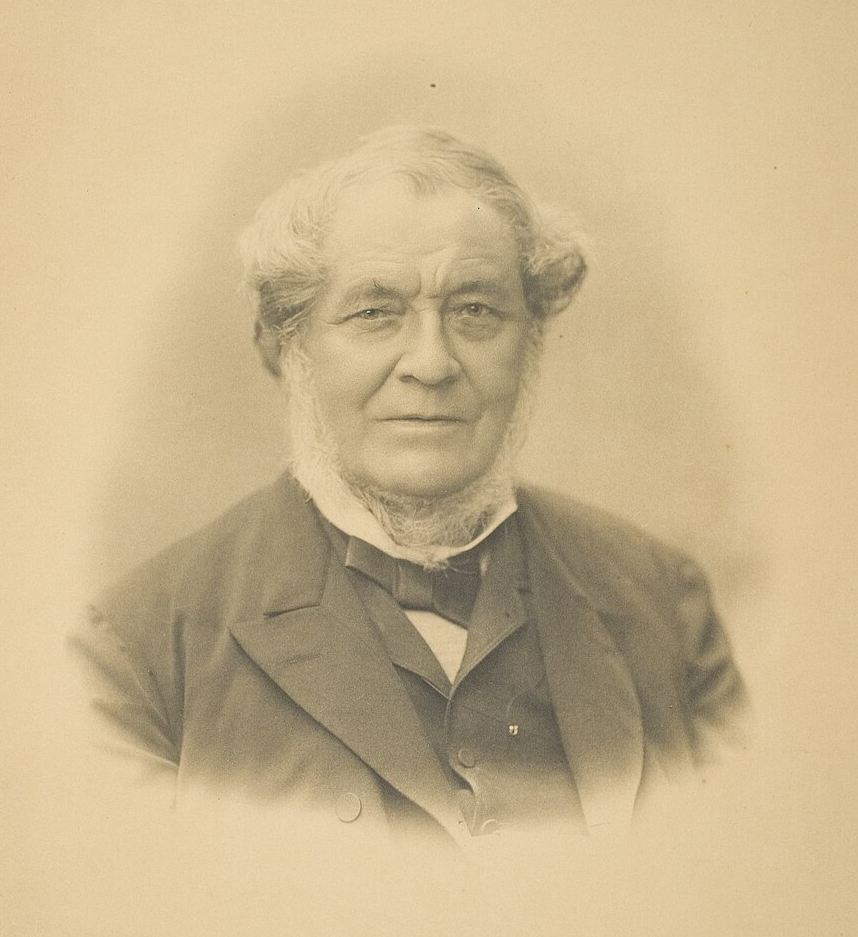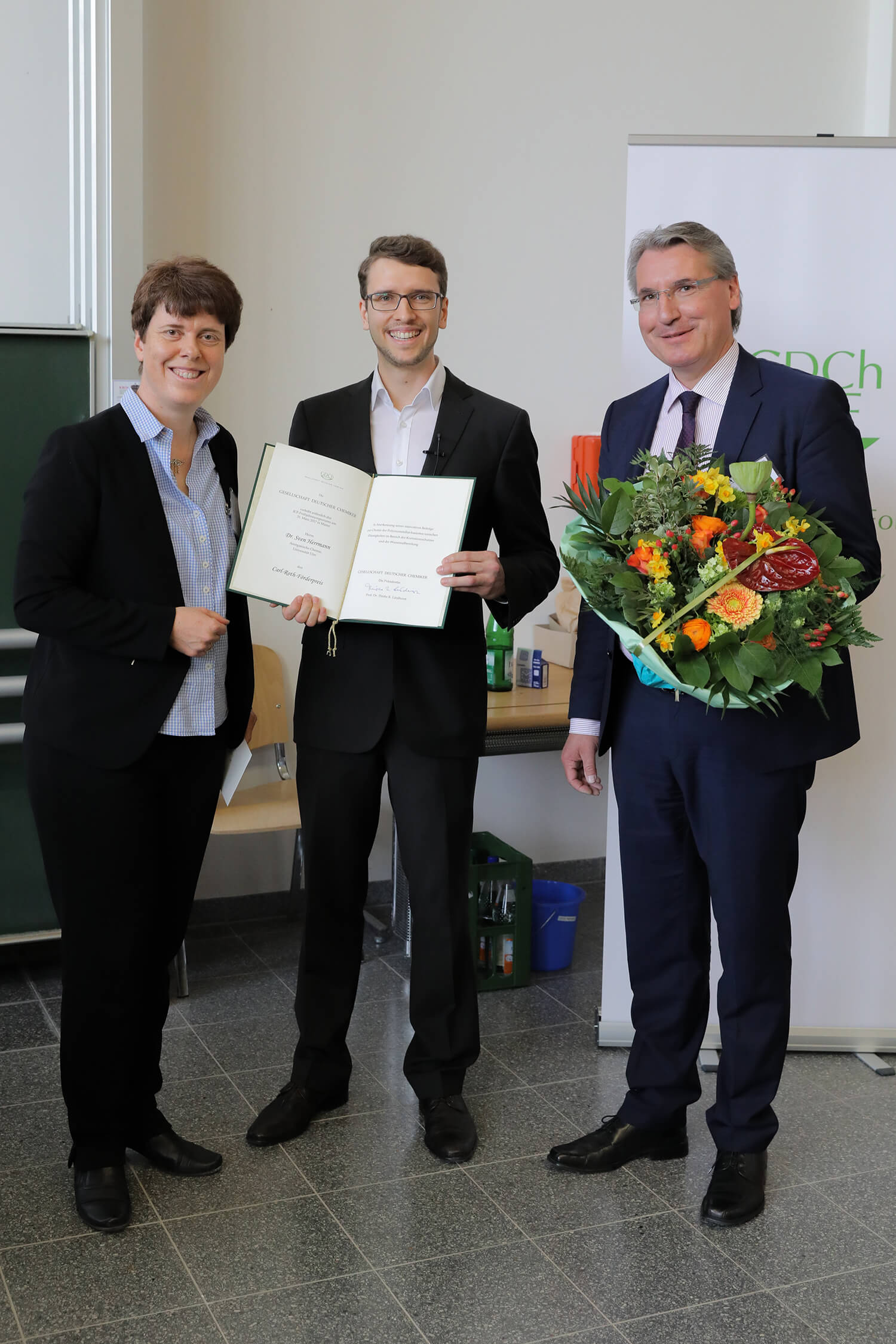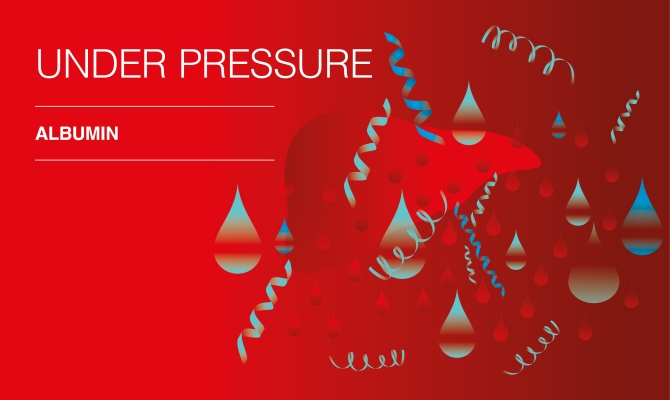
Fire and flame for science
What made the inventor of the Bunsen burner so important?
In March 1811, someone was born in Göttingen who was to have a lasting impact on laboratory work – not only through his practical inventions, but above all through his passionate way of practising and communicating science. Robert Wilhelm Bunsen, the son of a Göttingen librarian and language professor and his wife Auguste, a daughter of the syndic of the city of Goslar, left no doubt about his curiosity and perseverance even in his youth, and completed his doctorate at the Georg August University of Göttingen at the age of 19. Over the course of his life, he developed into an influential and renowned chemist who was committed to his research and did not shy away from dangerous experiments.
Curious: Bunsen probably postponed his birthday
Bunsen’s actual date of birth is disputed. “The baptismal entry in Göttingen states 30th March 1811 but, according to his biographer, Bunsen himself later celebrated his birthday on 31st March,” summarises a short article by Deutschlandfunk.de. [3]

A dangerous commitment to science
Bunsen’s commitment to practical research left many traces – the most momentous probably in 1843 with his work on compounds of the substance cacodyl, a “highly toxic liquid that stinks of faeces and ignites spontaneously in the air”. [4] In one experiment, a sample of cacodyl cyanide literally exploded under his nose. The accident left Bunsen blind in his right eye, and he suffered severe poisoning. [1] However, this did not stop him from continuing his experiments.
While analysing blast furnace exhaust gases, he once lost consciousness due to toxic gases and had to be brought to safety by a colleague. But even this event did not persuade him to give up his further research.
It is therefore hardly surprising that, in 1846, he also agreed to join an expedition to Iceland to investigate the geological conditions of the Hekla volcano, among other things. Thanks to his growing expertise in gas analysis, he was ultimately ideally suited to this task. Bunsen personally collected hundreds of samples from the volcanic crater, which had erupted just three months earlier, for subsequent analysis in the laboratory. The daring researcher also studied the surrounding geysers and helped to explain how they worked. In another case, he narrowly escaped disaster: Shortly after he had moved away from a sampled geyser, a 50-metre-high column of steam shot into the air. [1]
The path to the Bunsen burner
In 1851, Bunsen was offered a tremendous career opportunity: The professorship of chemistry at the University of Heidelberg had become vacant. Despite his good reputation in the scientific community, the university management only saw Bunsen as their second choice. But when the actual favourite, Justus Liebig, declined the appointment, Bunsen had the best negotiating options. He not only secured the second-highest professorial salary at the university, but also the titles of Court Councillor and Director of the Chemical Laboratory. He also secured the construction of an independent chemical laboratory. The university therefore approved an independent chemistry building worth more than 76,000 guilders and, between 1850 and 1860, spent as much as 97% of the state’s new building funds on chemistry alone. [2]
As part of the construction work, the buildings were equipped with new gas lighting – an opportunity for Bunsen to think about better ways of utilising gas in the laboratory. The gas burners available until then produced a sooty, uneven flame that was unsuitable for precise chemical work. Together with the university technician Peter Desaga, Bunsen developed an improved version of the burner by regulating the oxygen supply via air vents. He drew on preliminary work by Michael Faraday, among others, and ultimately created a design that was to become established in the laboratory world.
The clear, de-illuminated flame made it possible to observe the characteristic spectral lines of various elements. This led to the discovery of the elements caesium and rubidium and laid the foundation for modern spectroscopy – a milestone that Bunsen achieved in his collaboration with the physicist Gustav Kirchhoff.
A passionate teacher
Bunsen was not only a pioneer in his own laboratory. He also impressed with his knowledge and burning passion in his teaching activities at the University of Heidelberg. He repeated his lecture on the fundamentals of general chemistry, stoichiometry and electrochemistry for 72 semesters for up to 104 registered listeners. In doing so, he went far beyond simple reading. “At the same time, he [Bunsen] accompanied the lecture with experimental demonstrations of marvellous perfection. […] In this way, he placed the listener at the centre of the exploration of the subject as if he were carrying it out himself,” described Wilhelm Wundt, one of Bunsen’s students. [2] According to one anecdote, the gifted lecturer was also very gracious with his less motivated pupils. When a student asked him for a certificate of attendance at the end of the semester, the professor no doubt remarked that he had not seen him in the lecture theatre. The student is said to have justified this by stating that he always sat behind a pillar, to which Bunsen is said to have replied: “Ah…there are so many people sitting there” – and signed the certificate anyway. [1]
A life dedicated to science
Bunsen retired from teaching at the university in 1888. During his 36 years in office, he had invested very little money in the maintenance of the once unrivalled chemical building towards the end, meaning that it had long been in need of renovation. Apparently, Bunsen’s attachment to his old instruments played a role. The American Leroy Wiley McCay, a student of the professor at the time, recalled how an assistant drew his attention to an old set of scales: “It belongs to the old man,” the assistant is said to have said to McCay, “Such a sad object, isn’t it? Look at the long crack in the glass door. He could have the finest scales that human skill can produce, but he insists that he can weigh to a twentieth of a milligram with this thing, and that’s enough.” [2]
Although Bunsen seemed to want to avoid structural changes in his final years, he did not leave his professorship without prospects. He had saved almost 25,000 marks from the annual laboratory budget and left it to his successor Victor Meyer as a basis for renovations. Bunsen allegedly never set foot in his former institute again and never saw the new buildings that followed later. [2]
Robert Wilhelm Bunsen died in Heidelberg on 16th August 1899 at the age of 88. His long-time companion and friend Henry Enfield Roscoe said in an obituary: “As a researcher, he was great. As a teacher, he was even greater. As a man and friend, he was the greatest.” [ 5]
Incidentally, Bunsen was never married. His reason for this was that he spent too much time in the laboratory. However, it is possible that his work with unpleasant-smelling substances helped him to preserve his bachelorhood. Agnes Fischer (the wife of German chemist Emil Fischer) is reported to have once said: “First I would like to wash Bunsen, and then I would like to kiss him because he is such a charming man.” [1]
Robert Bunsen’s most important achievements
1. Spectral analysis (1859/60) [1, 2]
In 1859/60, Bunsen, together with Gustaf Kirchhoff, succeeded in scientifically establishing spectral analysis. This led to the discovery of the elements caesium (1860) and rubidium (1861).
For the first time, the chemical composition of celestial bodies could be analysed using spectroscopic methods.
1834: Development of the “grease-spot photometer” for measuring light intensity [1, 6]
2. Electrochemical work:
1814: Improvement of the Grove cell with carbon cathodes [1]
1852: Electrolytic pure representation of metals (strontium, barium, aluminium, rare earths) [1]
1859: First mass production of pure magnesium and utilisation for commercial photography as a flash [1]
3. Safety and basic chemistry:
1834: Discovery of iron hydroxide as an antidote for arsenic poisoning [1]
1835/36: Analysis of toxic cyanide compounds [1]
1851/52: Fundamentals of the development of iodometry [2]
4. Instrumental developments:
1855: Development of the Bunsen burner with technician Peter Desaga [1, 2]
1870: Invention of the ice calorimeter [5]
1887: Invention of the condensation calorimeter [7]
Year unknown: Development of the water jet pump and hose clamp [2]
5. Photochemical research with Henry Roscoe (1855 to 1862):
Systematic investigation of light-induced chain reactions [1, 2]
Discovery of the proportionality of reaction rate and light intensity [1]
Described by Ostwald as a “classic model for experimental work in physical chemistry” [2]
Sources:
[1] https://www.rsc.org/images/Historical%20Profile%20-%20Blazing%20A%20Trail_tcm18-204010.pdf
[2] https://www.gdch.de/fileadmin/downloads/GDCh/historische_staetten/bunsen.pdf
[3] https://www.deutschlandfunk.de/die-wiege-der-astrophysik-robert-bunsen-und-die-chemie-der-100.html
[4] https://de.wikipedia.org/wiki/Kakodyl
[5] https://de.wikipedia.org/wiki/Robert_Wilhelm_Bunsen
[6] https://digital.deutsches-museum.de/de/digital-catalogue/collection-object/18143/
[7] https://www.britannica.com/science/Bunsen-burner





